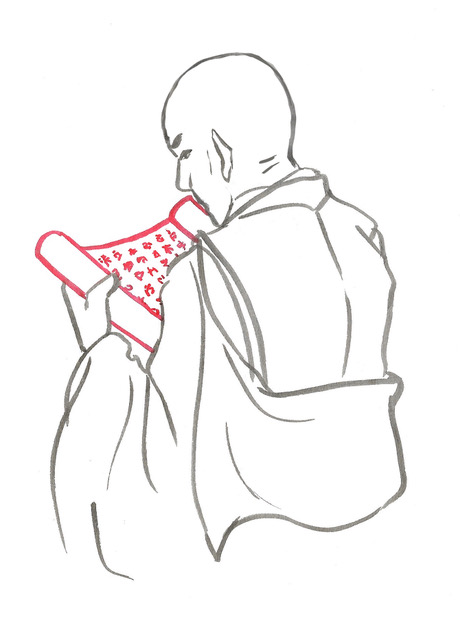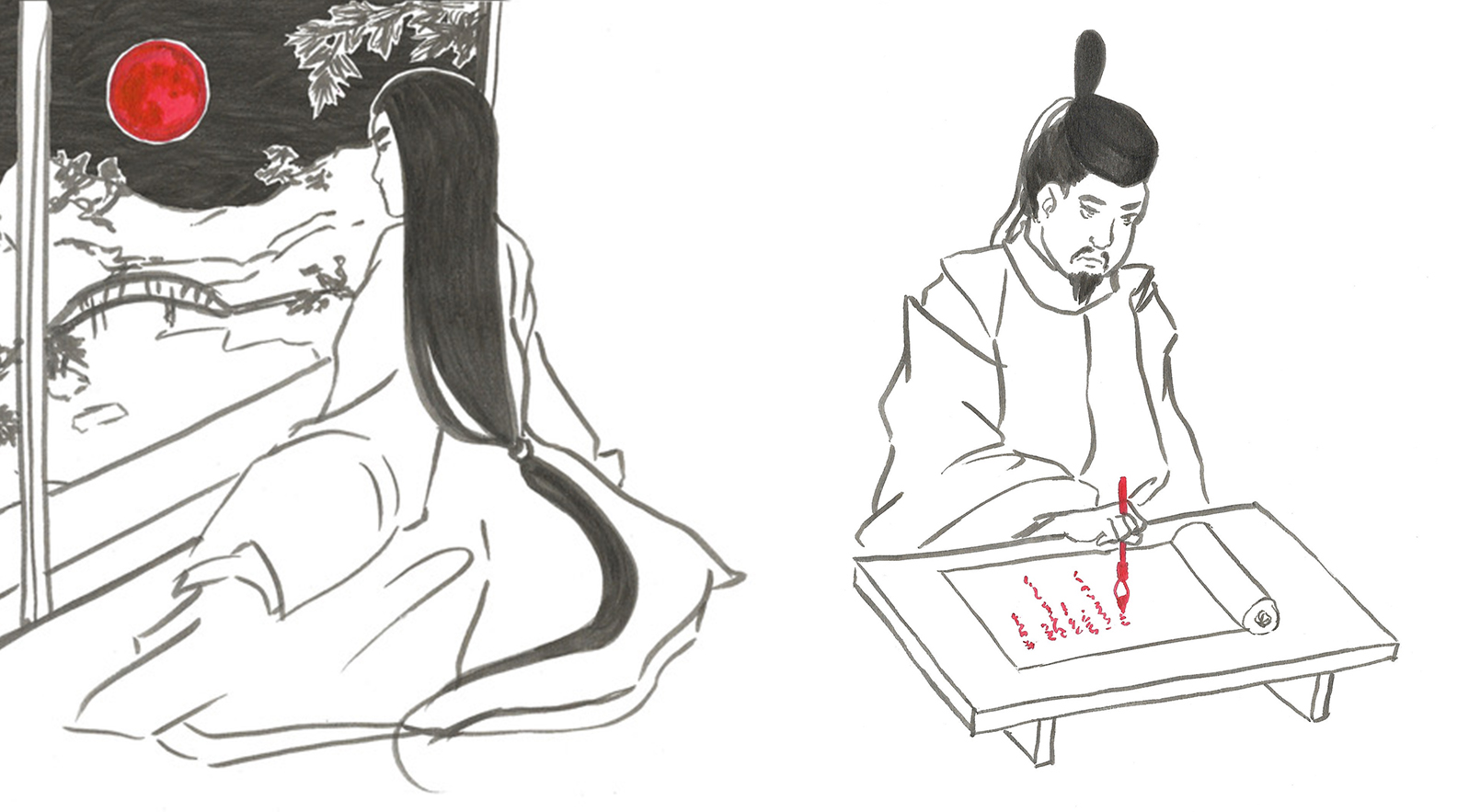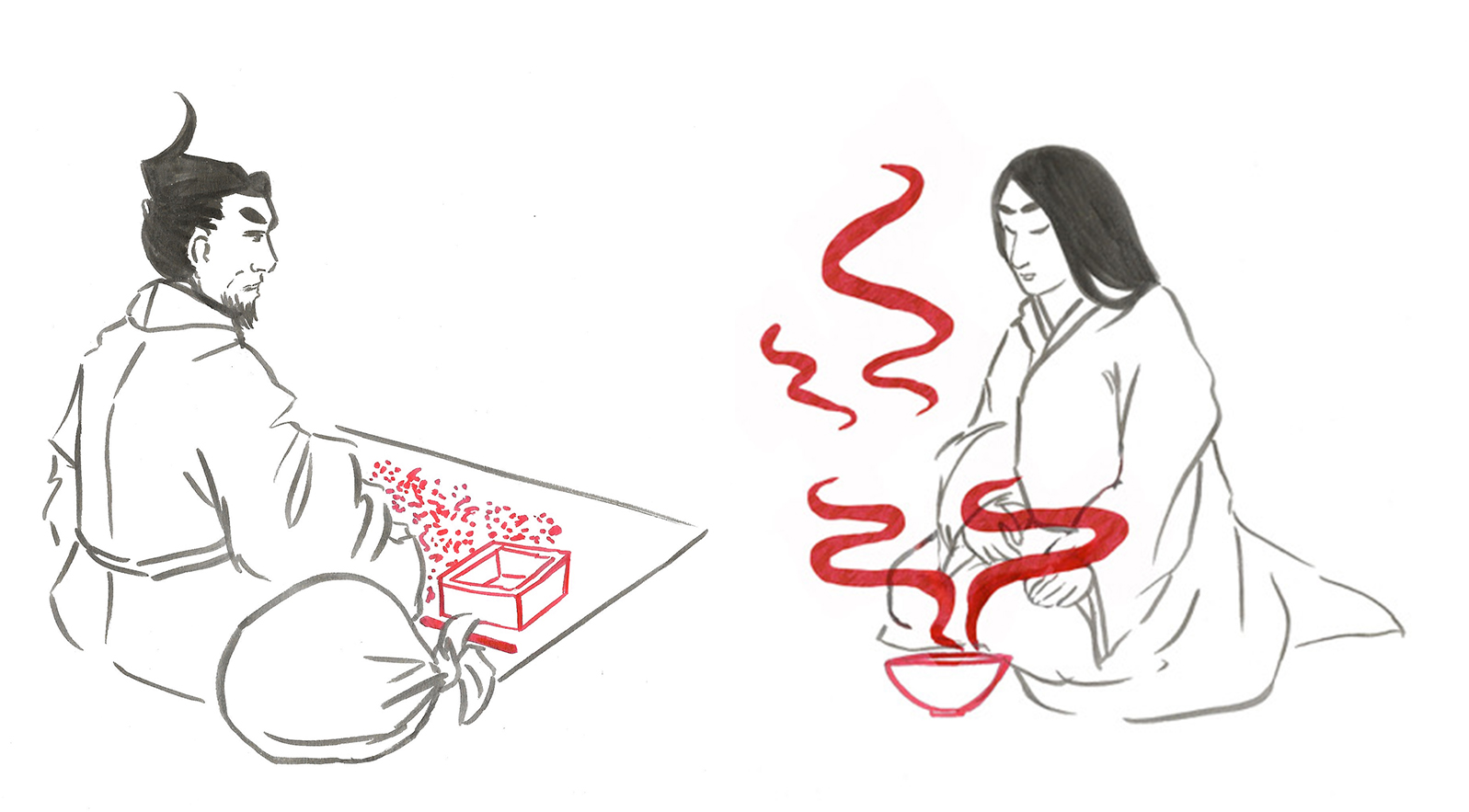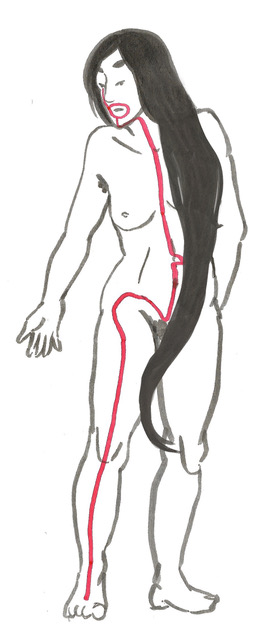Research Areas
Table of contents
The TIMEJ project is structured into four research areas and consists of a total of seven case studies that each probe into a specific social setting of medieval Japan. The project combines two perspectives in its selection of case studies: that of symbolic forms and that of social spaces bringing together distinct groups of people, with either aligned or contending interests.
The overarching goal is to identify patterns of temporal organisation as well as to examine how they relate to each other and the symbolic forms and social constellations at play in each area under investigation.
Research Area 1: Monastic time

© Alexandra Ciorciaro 2019
Buddhist monasteries were important places of religious learning and ritual in medieval Japan. They were also economic and political agents, not only catering to spiritual demands but also providing protection to landowners and social prestige to patrons by affording them sites for “conspicuous devotion”. Zen monasteries were of particular importance in bringing in new knowledge, artefacts, and technologies from the continent. Especially the monasteries founded by Dōgen (1200–1253) installed a coordinated, ritualised way of life and made use of a variety of methods of measuring, recording, and announcing time to this end.
Although Dōgen is arguably the author most quoted in regard to Japanese conceptions of time, research has mainly focussed on philosophical and spiritual aspects of his doctrinal magnum opus Shōbōgenzō and largely disregarded his role as an organiser and supervisor of monastic life. To rectify that, research Area 1 complements the dimension of doctrinal conceptualizations with an investigation of the practical aspects and the temporal organization of life. It not only explores continuity and rupture with Dōgen’s thought in the context of his own community but also in the broader context of monastic doctrines and practices of his time.
Experience, reflection, and organization of time in medieval Zen monasteries
Prof. Dr. Raji C. Steineck
Time in Sen’e’s and Kyōgō‘s Commentaries on the Shōbōgenzō
Etienne A. F. Staehelin, M.A.
Research Area 2: Time at the court and the shogunate
© Alexandra Ciorciaro 2019
The dawn of medieval Japan was marked by the increasing privatization of power, significant political changes, and numerous military struggles. These conflicts ultimately resulted in the establishment of a military government in Kamakura under the command of the first Shogun Minamoto no Yoritomo in 1192. Political power thus was divided between the imperial court aristocracy located in the western capital Heian and the warrior aristocracy in the east. In the course of the medieval era, the imperial court eventually lost its power to the warrior elite. However, it remained the primary locus of cultural production and was marked by highly aestheticised and strongly gendered exchanges. This is reflected in the literature produced and consumed there. For example, the prolonged periods of idleness at the female court are a recurring theme in the literary works of court ladies.
Research Area 2 investigates diaries and other court documents produced in these two aristocratic power centres, moving beyond the exploration of singular works or genres and aiming at a sustained study of time consciousness in the court writings of medieval Japan. It will help to understand the interrelation between power structures and time symbolisations, giving valuable insights into gender- and class-specific aspects of temporal imageries.
Time at the Court
Prof. Dr. Simone Müller
Time in the diaries of courtiers and warrior administrators
Alexandra Ciorciaro, M.A.
Research Area 3: Time at the market
© Alexandra Ciorciaro 2019
The medieval period saw substantial growth of markets, and of the production of goods for sale on them. Markets are of interest as spheres connecting aristocratic authorities with the less documented lives of commoners. Research on medieval Japanese markets so far has been focused on commodities, the emergence of a monetary economy, key actors, and societal relations involved, as well as distribution and logistics. However, the temporal organisation of them remains largely unexplored. Since market exchange and production for the market are usually considered as drivers of the concept of homogeneous, linear time, it is crucial to explore whether and to what extent they functioned in a similar way in medieval Japan. The primary objective of Research Area 3 is to clarify how and if market behaviour was temporally regulated, and how it influenced the time consciousness and management of the parties involved. As part of this analysis we investigate the impact of natural cycles on the one hand, and of cultural regimes (religious and secular) on the other.
Time in the market
Dr. Kōhei Kataoka & Dr. Georg Blind
Scent of Time
Vroni Ammann, M.A.
Research Area 4: Body time
© Alexandra Ciorciaro 2019
In the medieval period, the human body was not primarily understood as a physical entity determined by its material structure and functions; rather, it was mostly perceived through the lens of cultural criteria tied to specific situations such as rituals, or the encounter of courtly lovers. As a physiological phenomenon with a periodicity related to a fairly evident natural rhythm, menstruation provides an opportunity to evaluate the degree in which time consciousness was indeed tied to “nature”, and its observation. Additionally, menstruation was closely connected to cultural and religious taboos which regulated the presence of women in ritual and parts of daily life. Thus, it invites considerations about gendered temporalities.
Research Area 4 compares the various perspectives on the menstrual cycle evidenced in medical, religious and literary sources. Thus, it links several of the cultural settings explored in the other research areas. Furthermore, it will provide evidence concerning the extent to which knowledge about the menstrual cycle was generated and distributed, and on its impact on the planning and organisation of secular and religious affairs.
Body Time
Dr. Daniela Tan





